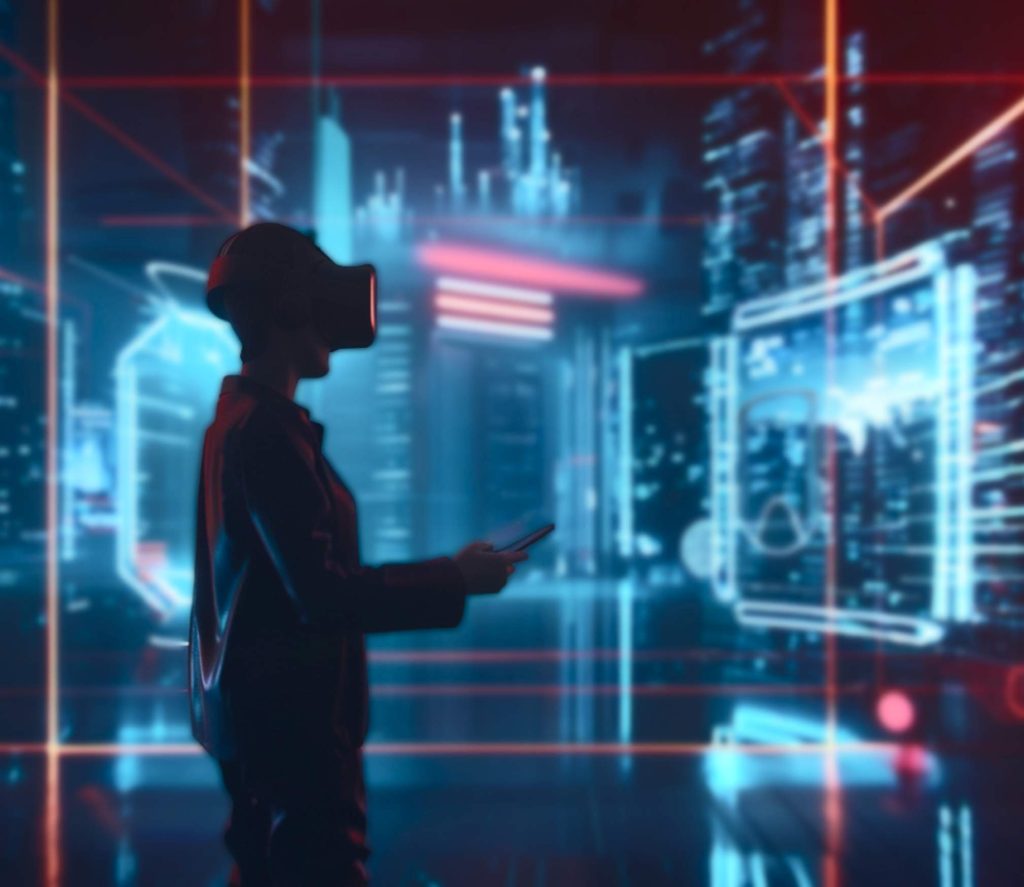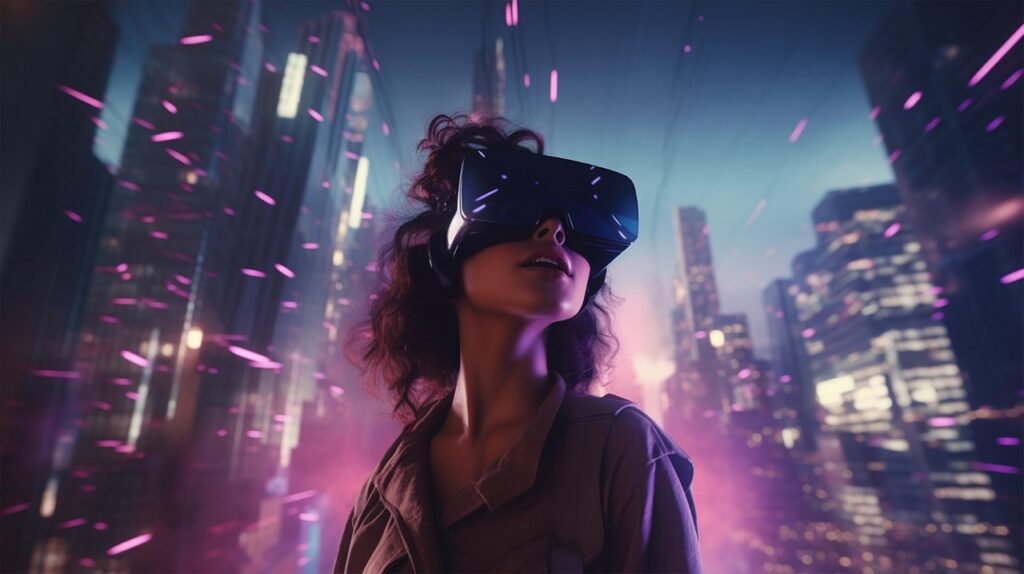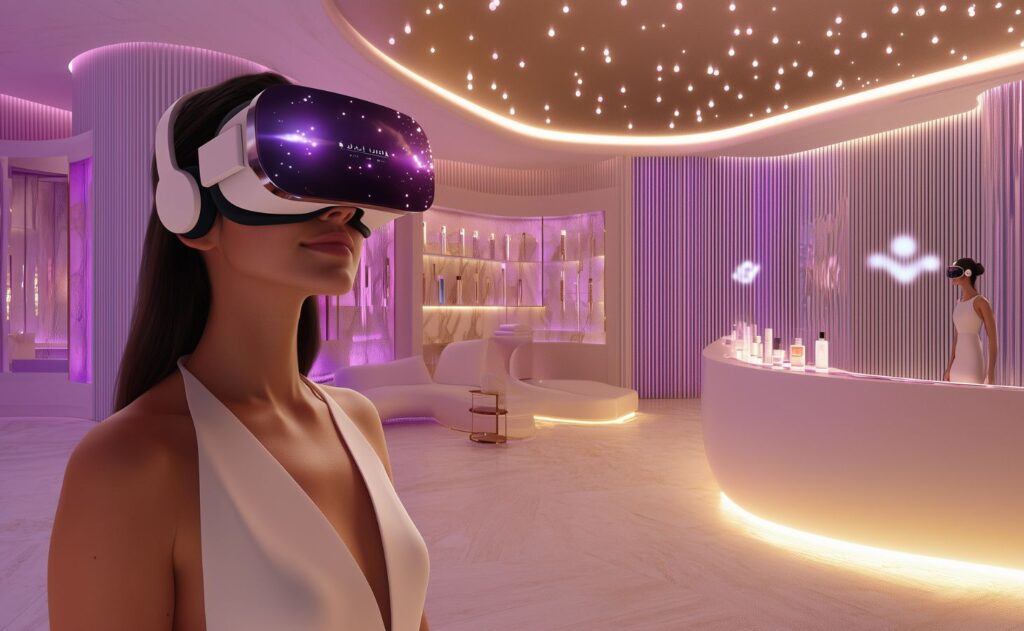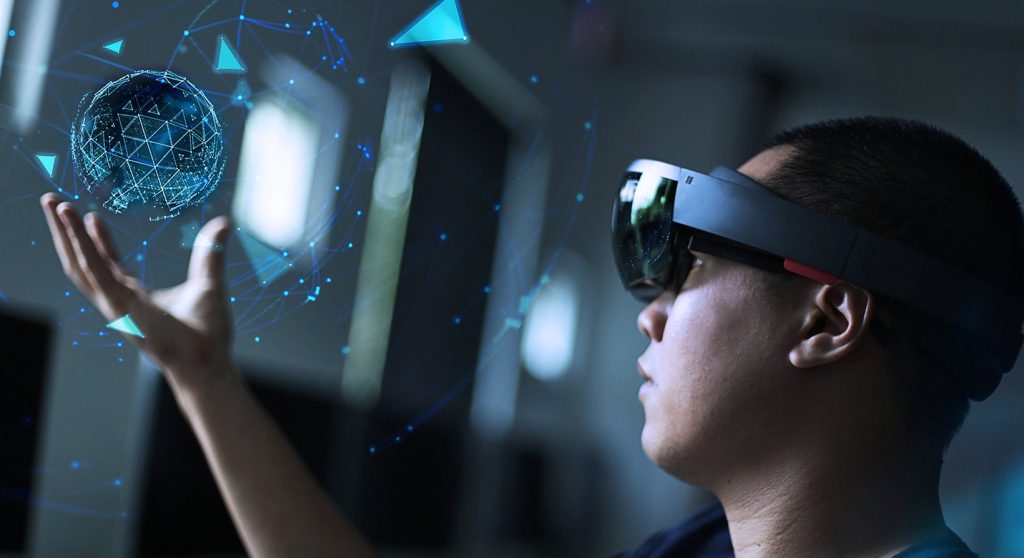AI and XR are revolutionizing various industries, reshaping how businesses engage with customers and craft experiences. AI streamlines content creation, boosting creativity and efficiency, while XR introduces a new dimension of interactivity and immersion. Together, these technologies are not just transforming marketing—they are redefining the future of work, education, and entertainment, opening up endless possibilities for innovation.
Why Are AI and XR Changing the Game?
AI and XR are reshaping how we engage with digital content and interact with our surroundings, creating new possibilities across many industries. Together, they are making experiences more immersive, personalized, and interactive. Whether it’s improving how we shop, learn, play, or work, AI and XR are driving a shift in how we interact with technology.
- Enhanced Immersion
AI deepens the immersive feel of XR by making virtual environments more responsive. Whether it’s a game that changes based on player actions or virtual shopping that lets customers try products, AI boosts the realism and connection to the experience. - Personalization
AI allows XR to deliver highly personalized experiences. It adapts content based on user preferences or behavior, whether recommending products or adjusting learning environments, making every experience feel tailored to the individual. - Interactivity
AI increases the interactivity of XR by allowing users to interact naturally through gestures, voice commands, and more. It can drive virtual assistants or intelligent characters that respond in real time, creating more engaging experiences.
Now, let’s look closer at YORD’s solutions and how we use AI’s power in XR to drive these changes.
AI Augmented Reality
Augmented reality (AR) is already transforming how we interact with the world by overlaying digital content onto the physical environment. With AI integrated into AR, the experience becomes much more powerful, with smarter, real-time interactions and personalized content. AI allows AR systems to recognize objects, process large datasets quickly, and adapt to user behavior, creating more intuitive and seamless experiences.
Augmented Reality vs AI
While AR and AI serve different purposes, they complement each other to create more interactive and responsive experiences. Here’s a comparison of their key functions:
Aspect | Augmented Reality (AR) | Artificial Intelligence (AI) |
Purpose | Enhances the physical world by overlaying digital content onto real-world environments. | Processes data, recognizes patterns, and enables decision-making. |
Key Function | Visualizes digital information in the user’s real-world environment. | Interprets and analyzes data to provide intelligent, adaptive responses. |
Technology Type | Visualization and sensory experience. | Cognitive computing and machine learning. |
Interaction | Users see and interact with digital objects in real time. | AI powers the decision-making and personalization of AR experiences. |
Use in AR Applications | Places digital objects in the real world (e.g., gaming, navigation, education). | Powers object recognition, data processing, and real-time user adaptation. |
Is Augmented Reality AI?
Augmented reality is not AI, but AI can significantly enhance AR experiences. AI provides the “intelligence” behind the AR by interpreting data, recognizing patterns, and generating content that adapts to the user’s needs. Together, AR and AI create more interactive and contextually aware applications, but AR alone doesn’t possess the decision-making capabilities that AI enables.
AI Virtual Reality
Virtual reality (VR) immerses users in digital environments, often for entertainment, training, or simulations. Integrating AI with VR takes these experiences to a new level by creating intelligent virtual environments that adapt to users in real time, making interactions more realistic and personalized. AI can enhance everything from character behaviors in gaming to more accurate simulations for training purposes.
Virtual Reality vs AI
While virtual reality (VR) and artificial intelligence (AI) are distinct technologies, their integration creates more immersive and dynamic virtual experiences. Here’s a comparison of their roles:
Aspect | Virtual Reality (VR) | Artificial Intelligence (AI) |
Purpose | Creates immersive digital environments that simulate real-world or fantastical experiences. | Processes data, learns from interactions, and makes decisions to enhance virtual environments. |
Key Function | Provides a fully immersive experience through a virtual world. | Powers intelligent behaviors, decision-making, and data interpretation within VR environments. |
Technology Type | Sensory immersion and environmental simulation. | Cognitive computing, machine learning, and adaptability. |
Interaction | Users are fully immersed in a virtual space where they can interact with the environment. | AI controls character behaviors, enhances realism, and adapts experiences based on user actions. |
Use in VR Applications | Used in gaming, training, simulations, and virtual tours. | Enhances NPC behavior, personalizes experiences, and creates smarter simulations. |
Is Virtual Reality AI?
Like AR, virtual reality is not AI, but it can be enhanced by it. AI helps create smarter virtual environments by improving how systems process data and simulate real-world scenarios. For example, AI can generate more realistic NPC (non-playable character) behaviors in games or simulate complex situations in training environments, making VR experiences more dynamic and interactive. AI-powered VR can better understand and respond to user actions, making the immersion feel more lifelike.
Top 4 Powerful AI and XR solutions
1. Generative AI Content
Generative AI is transforming the way digital content is made. This technology automatically creates images, text, videos, and 3D objects. It uses advanced machine learning techniques to produce content that feels human-made but is done faster and more efficiently. By 2025, it’s predicted that 30% of all marketing content will be generated by AI, highlighting the shift toward creative automation. Currently, 60% of marketing professionals already use AI for content creation, showing growing trust in these tools.
A key example of how AI improves speed and efficiency is AI-powered video creation, which reduces time and costs. The simplicity and accessibility of generative AI are making content production more available to everyone, allowing small businesses to compete with larger agencies.

2. Conversational AI
Conversational AI lets people interact with computers naturally, using voice or text. AI-powered chatbots are enhancing customer interactions, making support faster and more seamless. These AI systems can answer common questions, offer personalized information, and even solve problems, reducing the need for human involvement and boosting customer satisfaction. They also operate 24/7, providing constant support and improving business efficiency.
3. AI & XR in Marketing
AR/VR technologies, projected to reach a market value of $296.9 billion by 2025, allow brands to create unique and innovative marketing campaigns that surpass traditional advertising. With AI and XR, companies can enhance the shopping experience by letting customers virtually “try on” products, like clothing or furniture, before buying. This not only makes shopping more interactive but also helps reduce return rates. Immersive experiences can also be used to tell brand stories more captivatingly, offering customers a new way to explore and engage with products, boosting both engagement and retention.
4. Artificial Intelligence Hyperpersonalization
This approach goes beyond traditional personalization, which typically groups customers into segments. Instead, it uses AI to analyze a wide range of data in real-time—such as online behaviors, preferences, and user context—to deliver content, products, or services highly relevant to each individual. AI helps optimize customer interactions by suggesting personalized products, tailoring offers, or dynamically adjusting the content displayed based on user behavior. It can also guide customers step by step through their purchase or browsing journey via chatbots or assistants that address specific needs. Hyper-personalization, powered by AI, shifts the focus from “mass targeting” to “individual care,” redefining modern marketing standards.
The Future of AI in XR
The future of AI in XR is poised to revolutionize how we engage with both digital and real-world environments. AI enhances XR experiences by providing real-time adaptability, such as adjusting virtual spaces based on user behavior and utilizing deep learning to create lifelike avatars that mirror human gestures. AI-powered XR applications improve medical training, therapy, and virtual collaboration in healthcare and remote work sectors. As machine learning advances, we can anticipate even more seamless integration, making immersive technologies an essential part of industries ranging from gaming to education.
AI and XR are also driving digital experiences to be more inclusive and accessible, meeting the needs of diverse users. AI empowers XR with adaptive interfaces that cater to individual preferences, like voice commands for those with mobility challenges or visual enhancements for those with impaired vision. It also supports real-time language translation, making content accessible to a global audience. Together, AI and XR have the potential to create more equitable digital environments, ensuring that immersive technologies benefit a more comprehensive range of people, including those with disabilities.
Explore the future of AI in XR with YORD and discover how it can transform your business. Reach out to learn more!
👋 get in touch
By clicking the “send” button, I agree to the collection and processing of my personal data as described in the Privacy Policy.




